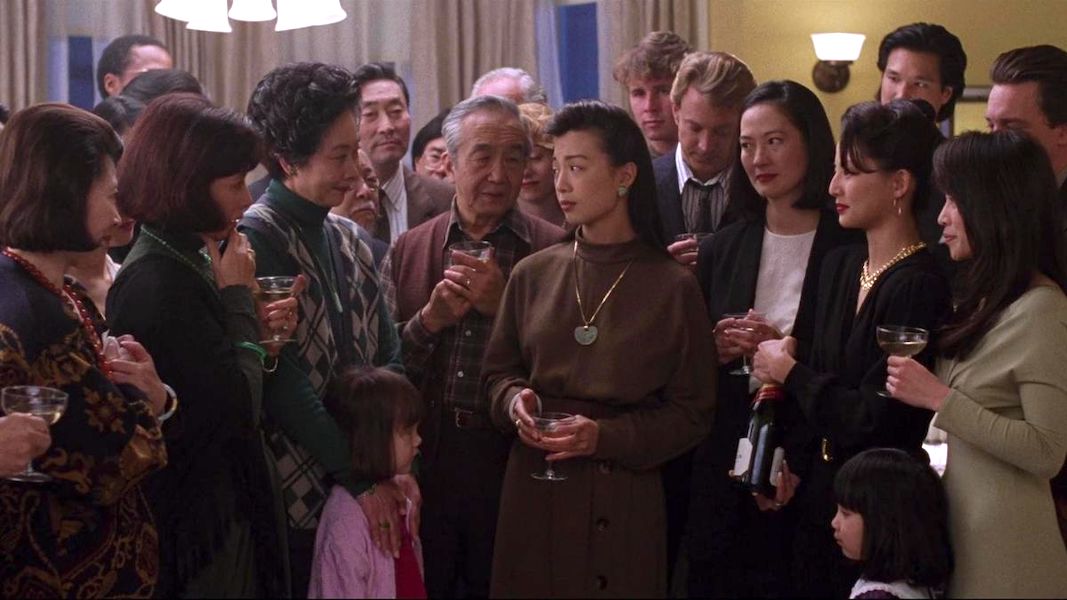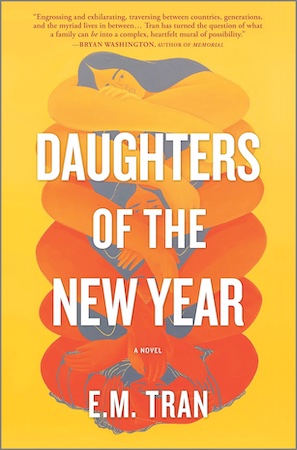In the second part of my book, Daughters of the New Year, one of the main characters, Xuan, goes to an athletic club with her mother. The Cercle Sportif was a real athletic club in Saigon, opened in 1902 for French colonials and Vietnamese social elite. There were tennis courts, a football field, sailboats, and fencing. Politicians, dignitaries, and industrialists could play billiards, dance, and read. But, the Cercle Sportif was really the place to be because of its swimming pool, where patrons could drink cocktails and sunbathe, and where the annual Spring Ball, Saigon’s most anticipated party, took place.
I was enthralled by this piece of history. I scoured resources for more information, wanting to know what it was like to be in this place at its height. I would never know the energy in the space, the feeling of glamour and the illusion of safety in the middle of a civil war. Being a young woman in this social fishbowl must have been thrilling and dangerous, I thought, as I imagined what this environment might be like for my character Xuan and her mother Tien.
And then, while I was immersed in this research, it occurred to me finally that my mother actually did know. She was from an extremely wealthy Saigon family. She had been there, in the fishbowl. When I asked her if she had ever been to the Cercle Sportif, she said “Of course.” When I pressed her for more, she said, “Your aunt liked to go there more than me.” And when I asked her if she’d been to the annual spring ball, she said, “What ball? I went to hundreds of them.” She never gave me what I asked for, which was the visceral feeling of being in the moment. And maybe she didn’t because she couldn’t. Maybe revisiting any of it is too painful. This conversation is so indicative of the ways different generations fail to speak to one another, the expanses of silence that weather the burden of traumatic memory. I failed to remember my mother, initially erasing her from the history, while my mother didn’t want to remember, at all, what womanhood during wartime was like. And yet, I can only hope that those parties, those memories, may also hold some small measure of joy.
This push and pull, remembering and obscuring, erasing and re-writing, happens in so many intergenerational narratives about women. Here are some books I think are important depictions of that complex relationship.
Build Your House Around My Body by Violet Kupersmith
Two women disappear: in 2011, a young Vietnamese American woman living as an expat in Saigon, and in 1986, a teenage daughter from a wealthy family, while wandering an abandoned rubber plantation. The narrative moves backwards and forwards in time, following the vanishing of these two women. There are so many narrative threads in this book that coalesce to create one magnificent tapestry—a fortune teller who runs the Saigon Spirit Eradication Company, a French Vietnamese boy lost in the woods, three childhood friends from the Highlands, a dog, a rat, so many snakes, and more than enough ghosts. This novel interrogates the long reverberating consequences of French colonialism in Vietnam, thinking acutely about the control of women’s bodies, racial identity, and erasure.
The Joy Luck Club by Amy Tan
In Amy Tan’s most famous work, The Joy Luck Club, four women, immigrants from China now living in San Francisco, struggle to raise their four daughters, first-generation women caught between traditional Chinese womanhood and individualist American values. This was the first book I read in which I saw a version of my own experience represented. These four mothers have held a regular game of mah jong for years, where they created community, preserved the shreds of their culture, and tried to soothe the ache of displacement. But, when Suyuan Woo passes away, her daughter June Mei Woo takes her place at the mah jong table, and is forced to confront all of her regrets brought forth by grief. The narrative moves through the perspective of each of these eight women, and has a reflective quality, each character looking back on their past lives and the growing pains of childhood, adolescence, and adulthood, the miscommunications and hurt that festers in many well-intentioned decisions.
How the Garcia Girls Lost Their Accents by Julia Alvarez
Going backwards in time and moving intergenerationally, we’re introduced to the four Garcia sisters, Carla, Sandra, Yolanda, and Sofia. The sisters moved to New York City from the Dominican Republic, after fleeing the dictatorship of Rafael Trujillo, and face the difficulty of cultural assimilation as well as the rigid expectations and disappointment of their parents. The book is divided into three parts: their adult lives in America, their initial struggles as refugees and new immigrants, and their privileged beginnings as upper-class Dominican girls. The narrative’s movement into the past shows us how origins might be obscured by time and memory, but we’re reminded that part of storytelling is the act of uncovering what might have been erased.
The Woman Warrior by Maxine Hong Kingston
Kington’s Memoirs of a Girlhood Among Ghosts is both a classic and a subversive revelation. While it is nonfiction, there has been much discussion since its publication in 1975 about how closely it adheres to “truth,” and how a work can or cannot be categorized. With the “talk-stories” that Kingston tells, each chapter reads like a different Chinese folktale. From the No Name Woman aunt of Kingston’s for whom she imagines various different fates, to the Woman Warrior raised in the mountains by two peasants, we learn both about a culture Kingston increasingly feels far away from and about an American identity she tries to reconcile. The conflict comes, in part, from a relationship with her mother, Brave Orchid, who shares fantastical tales and half-truths while also withholding the more shameful parts of their history.
Of Women and Salt by Gabriela Garcia
Jeanette struggles with addiction in Miami in 2018. From there, we trawl through the Cuban lineage of Jeanette’s family, meeting her mother Carmen, cousin Maydelis, grandmother Dolores, and great great grandmother Maria Isabel. Their fates intertwine with El Salvadoran migrants, Ana and Gloria, who are sent to a detention center in Texas. From 19th-century Cuban cigar factories to the manicured Floridian suburb, the choices of each woman ripples into the lives of the next generation. Contrasted starkly against the predictability of masculine violence—spousal abuse, paternal cruelty, and the brutality of war—each woman, in her own way, carries and protects her own story.
The Mountains Sing by Nguyễn Phan Quế Mai
The Mountains Sing follows two timelines: one from the perspective of Trấn Diệu Lan, who flees North Vietnam during the Communist land reform in 1954, and another from the perspective of her granddaughter, Hương, during the Vietnam War of the 1970s. By alternating chapters in each timeline, we can see how history cycles again and again, forcing each generation to carry their own traumas reproduced by wars rooted in conflicts long past. The resilience of women, as they continue to protect family and community despite French colonization, Japanese occupation, and Communist political machinations, and displacement, endures in this narrative.
Bestiary by K-Ming Chang
A novel spanning three generation of Taiwanese women, Bestiary reimagines myths and fables from the homeland of Daughter, Mother, and Grandmother. Deeply intertwined with the story of Hu Gu Po, a tiger spirit inside of a woman who ate the toes of children, Daughter grows a tiger’s tail and, with it, powers and desires. Daughter begins a relationship with Ben, another girl at her school; she flies kites with her volatile father while also outgrowing him; and she retrieves mysterious letters from Grandmother out of gaping holes in the yard. In addition to tigers, expect snakes, birds, and a menagerie of beasts. The complex relationship between parents and children, queer desire, and the physical fact of the human body are explored in some of the most poetic, vibrant, and dense prose I’ve read.
The Fortunes of Jaded Women by Carolyn Huynh
When Oanh leaves her marriage, she is cursed by a witch: Duong women will give birth to only daughters and will never find love. Years later, Oanh’s estranged and bickering daughters, Mai, Minh, and Khuyen, will reunite after a prophecy is made—their family will have a marriage, a funeral, and finally, the birth of a son. Set in the neighborhood of Little Saigon in Orange County, The Fortunes of Jaded Women is as much about love and marriage as it is about the cultural chasms we must bridge between generations. There is no shortage of dysfunctional, zany, chaotic women in this book full of Vietnamese joy.

